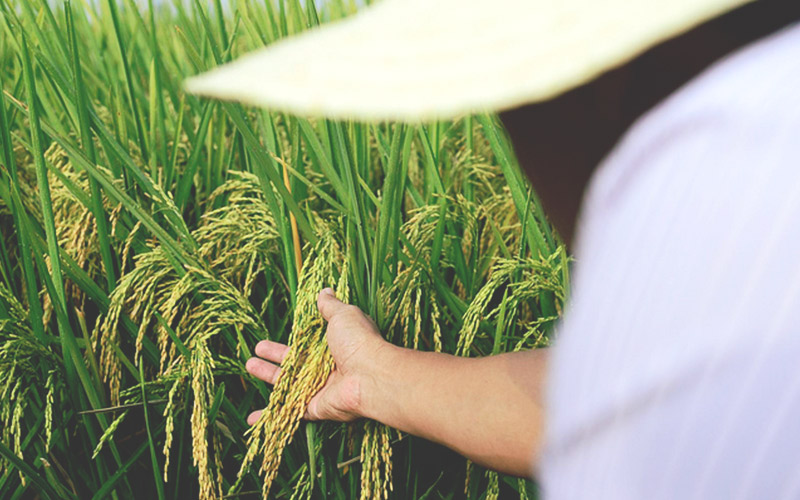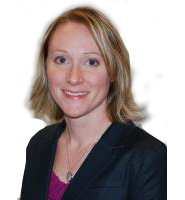On the International Day of Women and Girls in Science, Keri Carstens, Global Regulatory Lead – Seed Applied Technologies & Biologicals at Corteva Agriscience, speaks to Farming First about how we can encourage women into agricultural research.
From water scarcity, to pests and diseases that move into new regions and devastate crops, to access to information technology resources, the challenges faced by farmers around the world are complex and ever-evolving.
To solve these problems and enable food production, we need the best and brightest minds working in agricultural research. We need new ideas and diverse viewpoints. The International Day of Women and Girls in Science highlights the great need for women in science, and promotes the impact they can have.
I grew up on a multi-generational farm in Iowa; my family produced corn, soybeans, beef cattle, hogs, sheep, and the occasional hay and oats crop. My dad was a science teacher before he came back to farming full-time. Early on he got me interested in the technical and scientific aspects of farming, by describing the types of equipment and crop protection tools he used, and answering my endless “why” and “how” questions.
For many years, I was certain I would become a veterinarian, so I pursued a pre-veterinary biology degree. One summer during my undergraduate studies, I applied for a Program for Women in Science and Engineering summer research internship. I was accepted and was assigned to a lab that does pesticide toxicology and risk assessment research.
This area of study is the interface between the tools farmers need, like pesticides, and protecting the environment. I fell in love. I have always had a passion for agriculture and the environment, and that area of study sits at the very nexus of the two, helping farmers to make decisions that will protect their harvest and environment at the same time. That summer, I decided that my next steps would be to pursue a Ph.D. in pesticide toxicology, and a career in the field.
I now work at Corteva Agriscience, Agriculture Division of DowDuPont, and I serve as Global Regulatory Lead for Seed Applied Technologies and Biologicals. Around the world, there are special regulatory processes required for each pesticide used as a seed treatment to prevent food loss.
My job is to coordinate with the team of scientists and regulatory specialists around the globe to make sure we do the studies we need to demonstrate safety and efficacy of the seed treatment products, and that we deliver those data to regulators so they can make a decision about the new products we are proposing. In addition to this work, I have the opportunity to lead our company’s engagement around pollinator stewardship.
I love my job. I work at the intersection of agriculture, science and environmental stewardship, with the goal of enriching lives of farmers and consumers, so we all see sustainable progress. And, every day I am amazed at the number of smart, compassionate, fun, diverse people I have the opportunity to work with – all who care about the same things I do.
While barriers remain, I believe the situation for women in science has improved over where it has been historically. Around the world, movements like the International Day of Women and Girls in Science help to highlight the gaps that remain, but more importantly, the achievements of women in STEM fields. These are important steps in the right direction. The old saying “to see is to believe” in many ways applies to inspiring the next generation of scientists; young people need to see people like themselves in careers to feel inspired and empowered to pursue the path.
To overcome the barriers that do remain, I think it boils down to two needs: encouraging fearlessness and building on programming. Mentorship programs and internships are key to bringing more females into STEM fields, but we cannot overlook basic encouragement. At several points in my academic studies and my career, I have benefited from advocates who took a strong interest in me and said “go for it.”
At the same time, that bolstered my initiative to pursue internships, or new roles. One example from my own past that I would highlight – during my undergraduate studies at Wartburg College, I worked in a professor’s biology lab a few hours each week, conducting very basic experiments for some extra money. This man had unbelievable patience with me, while I trialled new CO2 probes and re-ran experiment after experiment for a small-scale study I was conducting.
All along, he encouraged me to try new things and take my time, so that I could learn. What he was teaching me was the basic research process.
To this day, I credit Dr. Ventullo as instilling in me the confidence to apply for the summer Women in Science research internship, which led to my “discovery” of the field of toxicology, which became my career. It can be as simple as one person’s words of encouragement. And, if each of us can play that role for one young woman, we will make a difference.
Featured photo credit: Neil Palmer/CIAT



